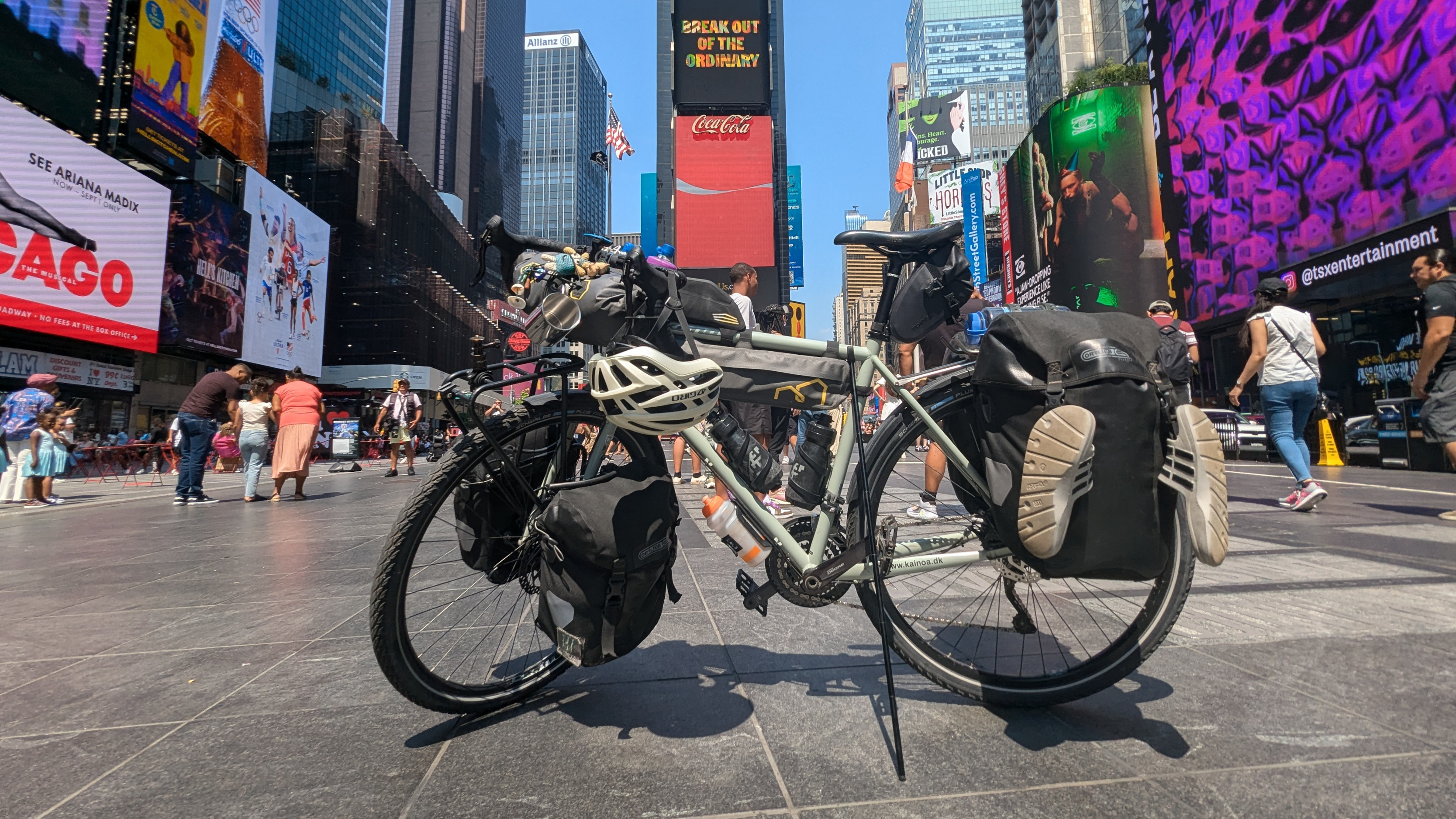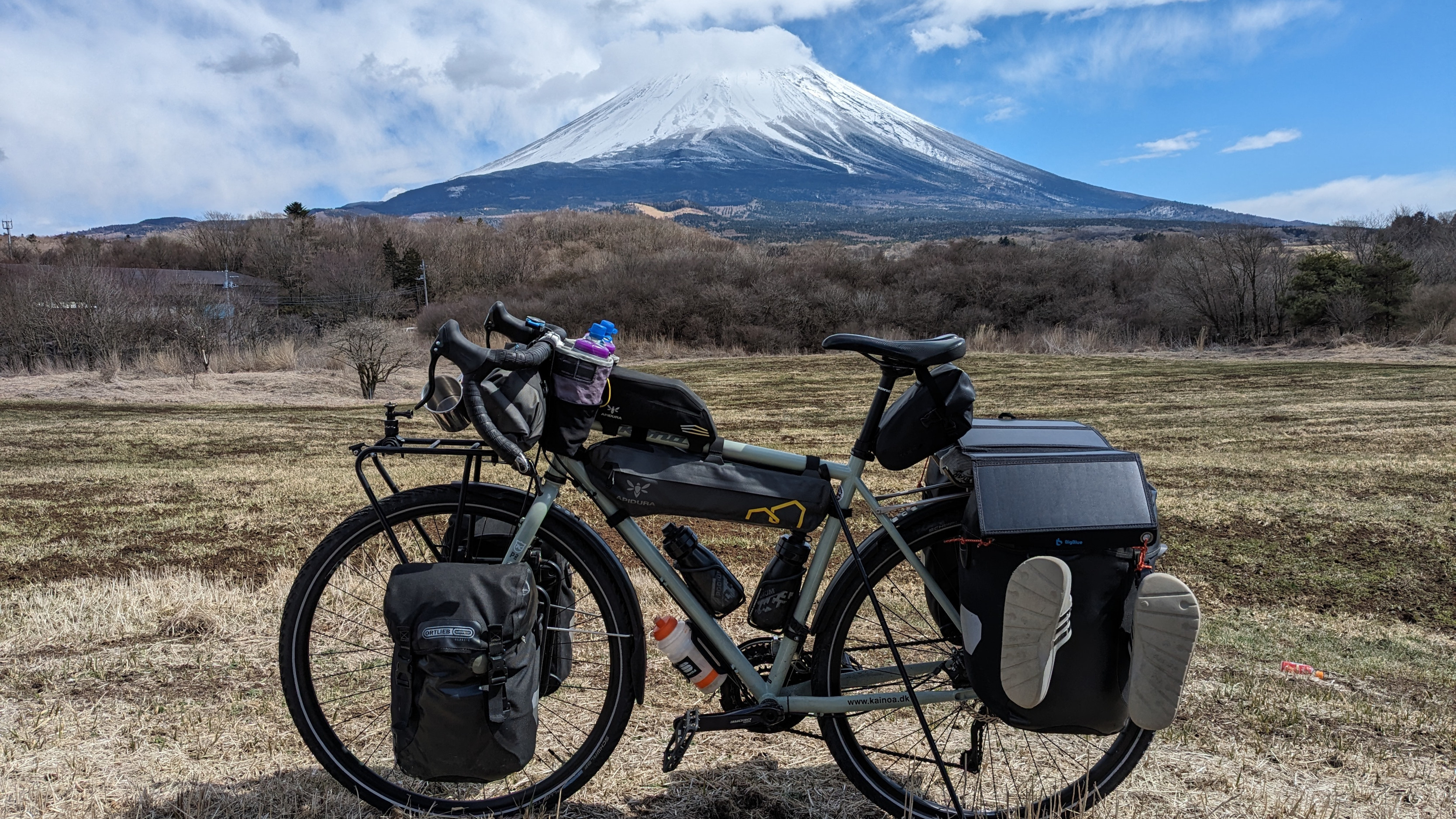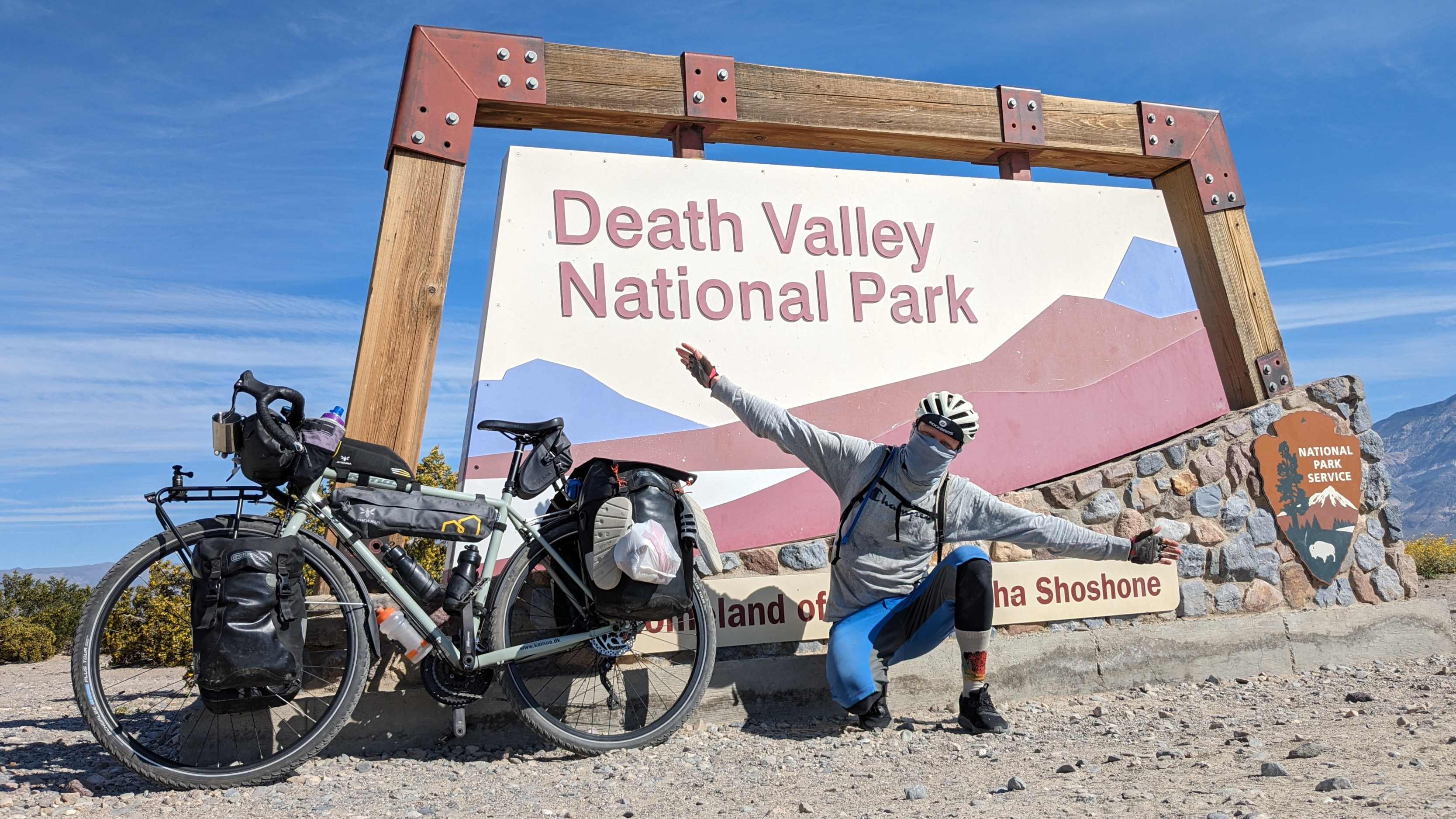
USA Part 1 | Biketour Journal from Los Angeles to Pueblo
Intro
Part 1 of my journal covering my coast-to-coast bike tour of the USA.
There’s something raw and exhilarating about setting off on a journey with nothing but a bike, a tent, and the open road ahead. No fixed plans, no safety net—just the promise of adventure stretching across the vast American landscape.
From the sun-soaked beaches of California to the towering peaks of Colorado, this journey would take me through scorching deserts in Death Valley, across the Navajo Nation of the Native Americans, into the deep chasms of the Grand Canyon and over quiet mountain passes - some places so remote they felt untouched by time. Along the way, I’d battle the elements, find kindness in unexpected places, and experience the serendipity that only long-distance cycle travels can bring.
This is the story of a ride across America—where every turn of the pedals brought a new challenge, a new connection, and a deeper understanding of life on the road.
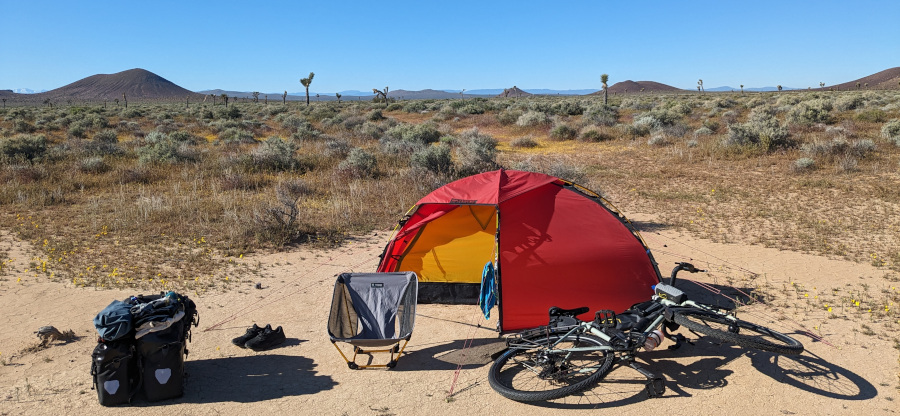
Recap of week 147 to 154
This cycling adventure across America began with my arrival in Los Angeles, where immigration skepticism gave way to the freedom of the open road. Rolling through the lively streets of Venice Beach and Santa Monica, I made my final preparations before heading into the wilderness. The towering peaks of Angeles National Forest provided my first real test, as rain forced me into an unexpected rest day. From there, I pedaled through the surreal desert landscapes with Joshua trees and the alien-like formations of Trona Pinnacles, inching closer to the unforgiving heat of Death Valley.
Death Valley was a world of extremes - blistering temperatures, endless horizons, and surprising human encounters, including a Danish couple who generously shared supplies. At Emigrant Campground, I witnessed the bizarre sight of an elderly man wrecking his Ferrari, a reminder that the road is always unpredictable. Climbing out of the valley was a grueling challenge, but the breathtaking views at Zabriskie Point made every drop of sweat worthwhile.
Nevada greeted me with long, open roads and moments of serendipity. I met a Swiss girl with an unexpected connection to my past travels, found shelter in a saloon during a rainstorm, and shared stories with a group of leather-clad bikers over tacos. Las Vegas was a brief but dazzling interlude before I rejoined the solitude of the road, following the historic Route 66 toward the Grand Canyon.
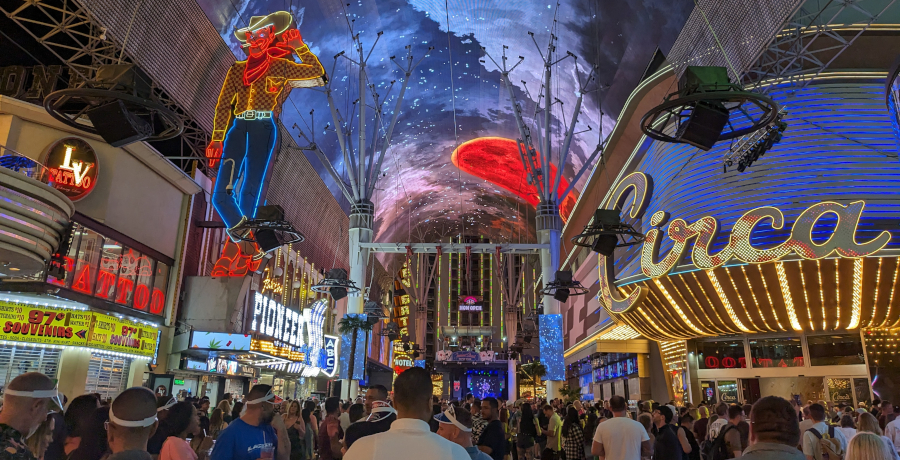
The iconic landscapes of the Grand Canyon and Monument Valley left me in awe, as I hiked, camped, and shared sunsets with fellow cyclists. In the remote Valley of the Gods, a rugged gravel road tested my endurance, but the kindness of strangers - offering water, food, and words of encouragement - kept me going.
Colorado brought a shift in terrain and challenges, with towering mountains, unpredictable weather, and much-needed gear upgrades. Warmshowers hosts in Durango provided a warm welcome and stories over stacks of pancakes. The climb over Wolf Creek Pass was a battle against altitude and fatigue, but the descent into the charming towns of South Fork and Salida made it all worthwhile.
Through deserts and mountains, blistering heat and freezing nights, this journey was as much about the landscapes as it was about the people I met along the way. With my wheels still turning and the road stretching endlessly ahead, the adventure was far from over - I had only reached the halfway point.
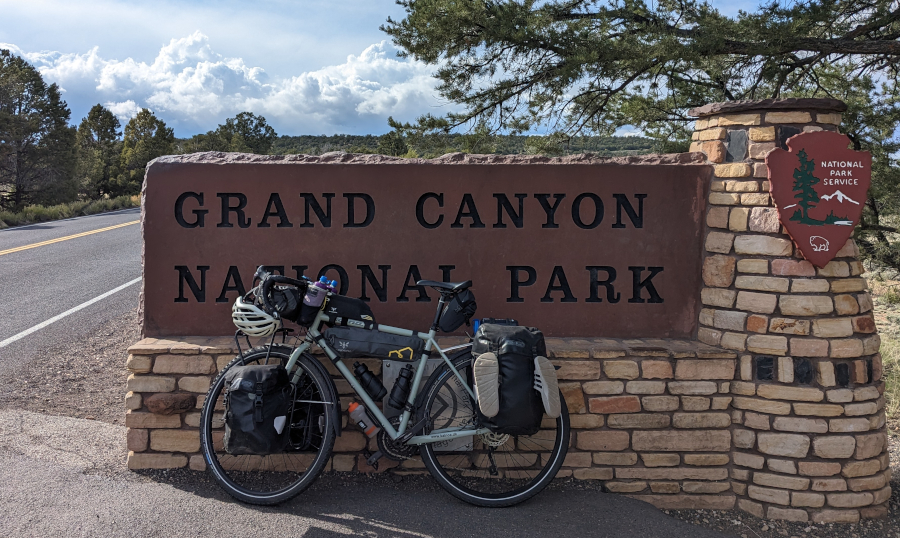
Arrival in Los Angeles: The Beginning of an Epic Ride
Touching down in Los Angeles, I was immediately met with the chaos of immigration—an officer skeptical about my long distance bike tour across the country and solo camping plans. After a 10-minute long debate, I was sure that my coast-to-coast journey would end before it even began. But somehow, the immigration officer changed his mind, threw my passport at me and ordered me to leave. I asked: “leave the country or leave the airport?” To my great relief, I was allowed to leave the airport, and my short-lived roller coaster ride of emotions and shattered dreams had in an instant come together again. I happily left the immigration desk, assembled my bike and once out of the airport, my adventure began. Rolling through Venice Beach and Santa Monica, I savored the salty breeze and the feeling of freedom. A quick pit stop for supplies, a tire change, and one final deep breath—I was ready for the open road.
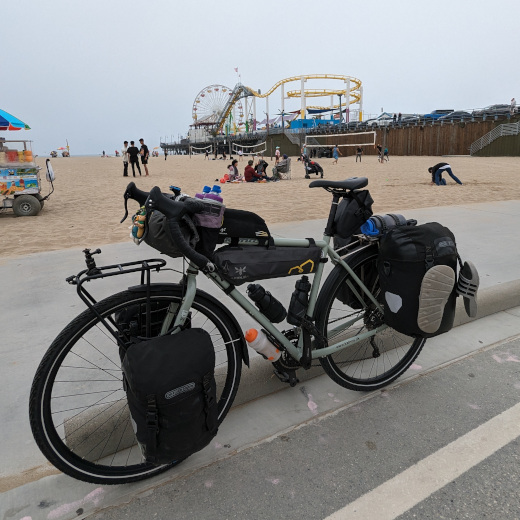 |
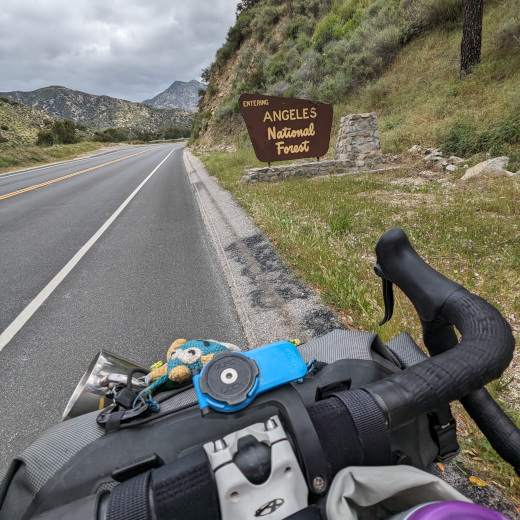 |
Leaving the city behind, I climbed into the Angeles National Forest, swapping traffic noise for the rustling of trees. A downpour trapped me in my tent for a day, forcing me to ration battery life and contemplate the journey ahead. The next morning, the sun returned, along with a generous camper offering pizza and conversations about some very deep personal matters - I was of course willing to lend an ear listening to all of it. After all, the journey is all about the people you meet. The very friendly guy offering the pizza had recently lost his home and was living out of his car while working at the local Domino's shop in Lancaster, the next city over after clearing the mountains from Los Angeles. Belly full, warm and dry again, I pressed on over the mountain and down into the flat desert plateau of California - a whole different world than the gritty city of Los Angeles. I cycled through empty Joshua tree-dotted landscapes and surreal desertscapes, my tires crunching over endless stretches of sand and gravel. Soon up, the furnace heat of Death Valley.
The Desert Calls: Trona Pinnacles and Death Valley’s Heat
The transition from urban sprawl to desolate beauty was staggering. Rolling past the eerie formations of Trona Pinnacles, I felt like I had landed on another planet. But before entering the unforgiving expanse of Death Valley, I first crossed Panamint Valley—where nature and human engineering clashed in the most spectacular way. A rare super bloom had transformed the valley floor into a sea of golden wildflowers, a fleeting explosion of life in an otherwise arid land. As I pedaled through this surreal landscape, the roar of fighter jets shattered the silence. The military bases nearby turned the valley into a playground for high-speed dogfight training, with jets hugging the rugged mountainsides, flying so low that they seemed to scrape the valley floor. The deafening noise forced me to clamp my hands over my ears, but I couldn’t contain my excitement—I was jumping like a little kid, thrilled at the rare chance to see these machines up close as they sliced through the air with precision.
A surprise encounter with a Danish couple in Panamint Valley reminded me how small the world can be at times and led to a gifted meal and some much-needed supplies, a testament to the kindness found even in the harshest places. That night I ate like a king - a pre-made dinner meal with homemade muffins and fresh pressed juice to top it all off while listening to the fading roars of the fighter jet engines heading home in the setting sun. Nights like these are the magic moment I am searching on the roads and the reason why I endlessly keep turning those pedals.
To reach Death Valley from Panamint Valley, I had to conquer a tough mountain pass, a climb that tested both me and the many four-wheelers sharing the route. The brutal heat claimed its victims—several off-road vehicles broke down, their engines overwhelmed by the relentless temperatures. My own “engine,” a one-wheeler powered by nothing but legs and determination, never wavered. With natural air conditioning and a steady rhythm, I crested the pass and descended into Death Valley, where the landscape shifted to something even more extreme. Towering peaks framed a land of shimmering dunes and salt flats, heat waves dancing on the horizon.
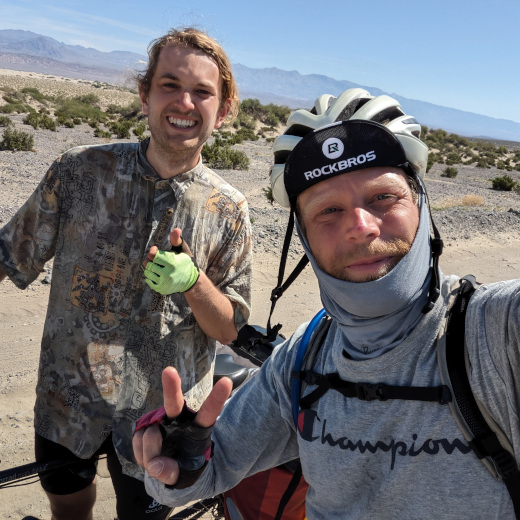 |
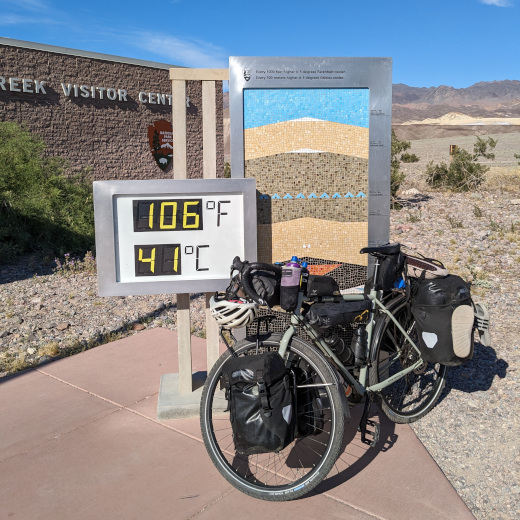 |
Just over the mountain pass, I stopped at Emigrant Campground, drawn to an informational plaque by the roadside. My bike was parked near a small toilet building, and I stood there, absorbed in reading—until a sharp screeching sound shattered the stillness. I turned around just in time to see a cloud of dust erupting in the distance. A car, hurtling toward me at what must have been 100 miles per hour, skidded wildly across the road.
In that instant, time seemed to slow to a crawl. My mind, running faster than my body, registered everything with crystal clarity—the car’s direction, the rock it was about to hit, the inevitable shift in its trajectory. It struck a dirt mound, then a jagged boulder, sending it into a sideways slide, aimed directly at me. Instinct took over. I chose my escape route in a split second—one step in the wrong direction and the car would have mowed me down, likely taking my head with it. Instead, it screamed past, missing me by what felt like mere inches before coming to a violent halt.
The driver, some reckless thrill-seeker, had turned the open road into his personal racetrack. Miraculously, he walked away unscathed—his car, however, wasn’t as lucky. Moments like these are reminders that roads are not playgrounds. If people want to push their muscle cars to the limit, they should do it on a closed racing circuit, not in places where one miscalculation could end in tragedy.
Later, as I walked toward Emigrant Campground, still shaken from the near-miss, I knew I wouldn’t be cycling any farther that day. I needed to let the adrenaline subside, to process what had just happened. As I reached the campground, a woman rushed toward me, relief washing over her face. She had seen me cycle past moments before the crash and had feared the worst. Her concern quickly turned into kindness as she and her husband—a warm and welcoming couple from Canada—invited me to join them for dinner. The evening was filled with conversation, laughter, and good food, a much-needed moment of comfort after the chaos of the day. Their generosity continued into the morning, ensuring I had a proper breakfast before setting off again. We exchanged contact information, and to this day, we still keep in touch—a friendship formed in the unlikeliest of circumstances.
The following day, I descended into Death Valley itself, greeted by a furnace blast of heat. The temperature soared past 40°C (104°F), making midday cycling a challenge. I took refuge at the visitor center, grateful for the unlimited drinking water, which I shamelessly exploited. The valley stretched before me in all its brutal yet mesmerizing beauty—salt flats shimmering like glass under the sun, distant mountain ridges painted in hues of red and purple.
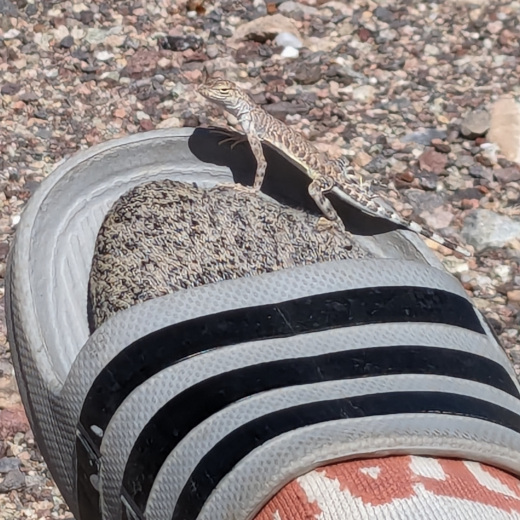 |
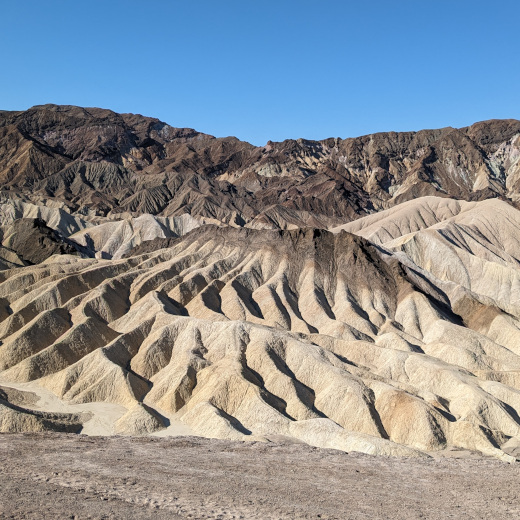 |
That evening, I camped along the road to Zabriskie Point, falling asleep under a sky so vast and clear that it felt like the universe itself had unfolded above me. At the first light of dawn, I was up and pedaling, determined to beat the heat as I climbed out of the valley. The golden badlands of Zabriskie Point glowed in the morning sun, a sight so stunning it momentarily made me forget the challenge ahead.
Beyond those barren slopes lay the road to Las Vegas—a city I had dreamt of visiting since childhood, watching reruns of Elvis Presley’s legendary Vegas performances. The thought of finally seeing it with my own eyes, after crossing some of the most unforgiving terrain on Earth, filled me with a fresh surge of excitement. The desert had tested me, but it had also given me memories I would carry forever.
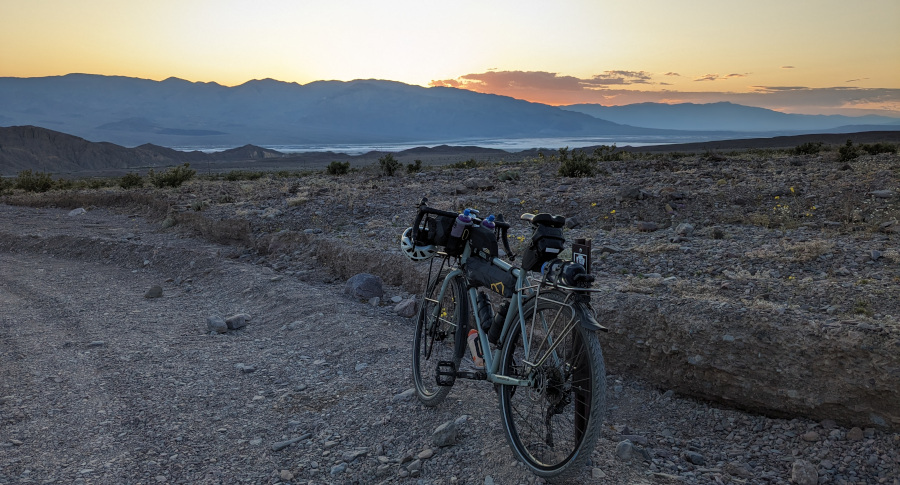
A Road of Serendipity: Nevada, Biker Gangs, Route 66 and Grand Canyon
Nevada greeted me with open roads and unexpected connections. I met a Swiss girl on the road whose sister I had camped with in Armenia—proof that the bike touring world is smaller than it seems. In Lovell Canyon, peaceful days of rest turned into sheltering from unexpected rainstorms. Seeking refuge in a saloon, I found myself in the company of a biker gang, swapping stories over tacos as thunder rumbled outside.
Then came Las Vegas—a city I had dreamed of visiting since childhood, a neon jungle unlike anywhere else. I spent an entire day immersing myself in the spectacle, walking the length of the Strip and stepping into the grand casinos, each more extravagant than the last. The intoxicating mix of flashing slot machines, ringing jackpots was enough to make anyone feel like they’d stepped into a movie scene. Outside, feather-clad showgirls posed for pictures, their glittering costumes catching the light, while street performers and live bands kept the energy pulsing through the night.
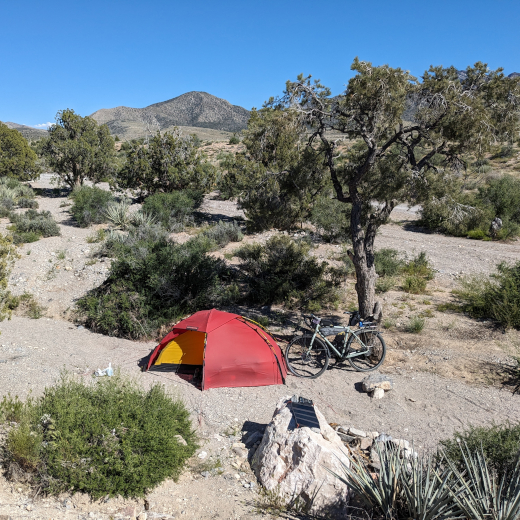 |
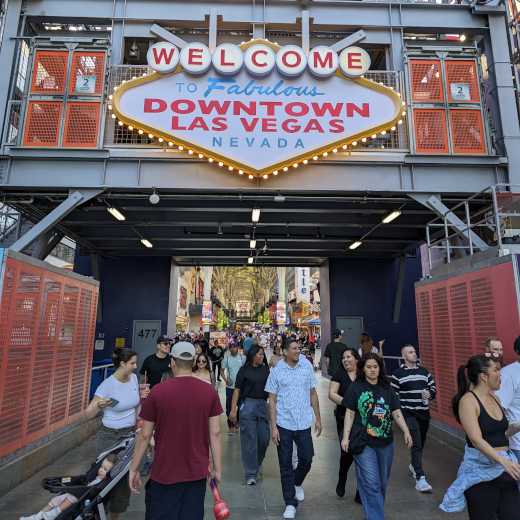 |
At Fremont Street, the heart of old Vegas, I danced to live music as people zip-lined above my head, their screams blending with the roar of the crowd. The giant LED canopy - the Fremont Street Experience - held me captive for a long time, its mesmerizing visuals transforming the ceiling into a kaleidoscope of color and movement.
Determined to get the full Vegas experience, I set aside a small amount of money to try my luck at the slot machines. I’m not a gambler, but I wanted to feel that rush, that moment of suspense as the wheels where turning coming to a stop one by one. To my surprise, my modest bet tripled, and though it was no fortune, it was enough to fund my meals for the next few days - turning my winnings into Little Caesars pizzas and satisfying lunches.
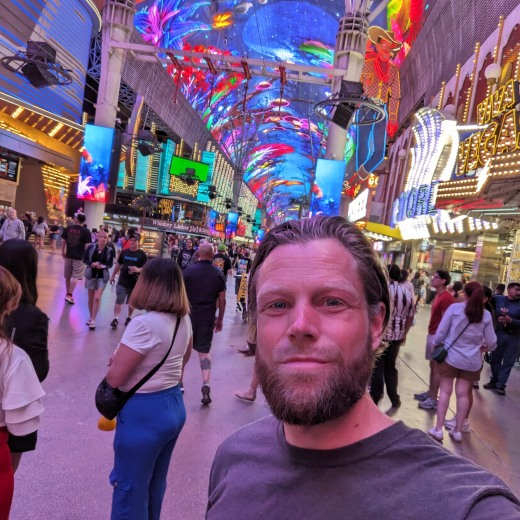 |
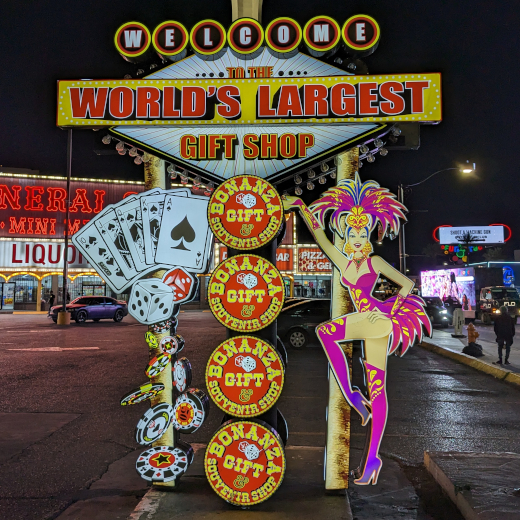 |
But Vegas, for all its dazzling excess, was just a stop along the way. The road was calling, and soon I was back in the saddle, heading toward the legendary Route 66, where the next chapter of my adventure awaited.
I pushed towards the colossal Hoover Dam, a marvel of engineering that stood as a testament to human ambition. The dam's sheer scale was staggering, and as I gazed over the edge, the Colorado River carved its way through the canyon below, a powerful force shaping the land for millennia. Beyond the dam, the Mojave Desert sprawled endlessly, its golden sands shimmering under the relentless sun.
One evening, while setting up camp, I encountered a green Mojave rattlesnake coiled near my tent, a reminder that this land was alive in ways both beautiful and dangerous. Carefully, I backed away, giving the serpent its space while marveling at its vibrant scales that blended into its surroundings - a brilliant camouflage making it difficult to spot.
Riding along Route 66 felt like pedaling through a time capsule, where the spirit of old America lingers in neon lights and rusting gas pumps. In Kingman, I wandered past vintage diners, their jukeboxes still humming rock 'n' roll tunes, and admired the classic cars parked as if they had never left the 1950s. Seligman, the so-called "Birthplace of Route 66’s Revival," was a celebration of the Mother Road’s golden age, with retro motels and quirky roadside attractions preserving a bygone era. Every mile was a reminder of how this highway once symbolized freedom, adventure, and the great American road trip.
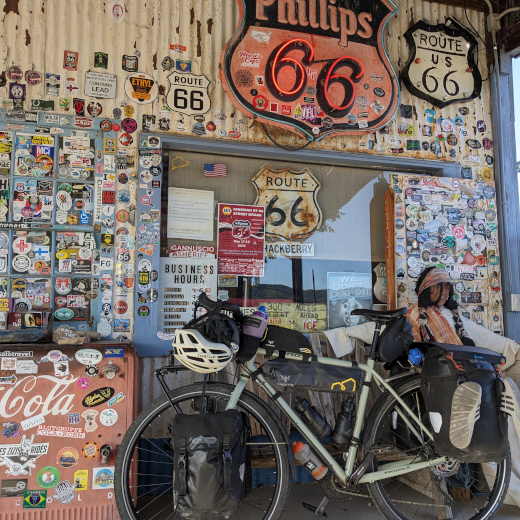 |
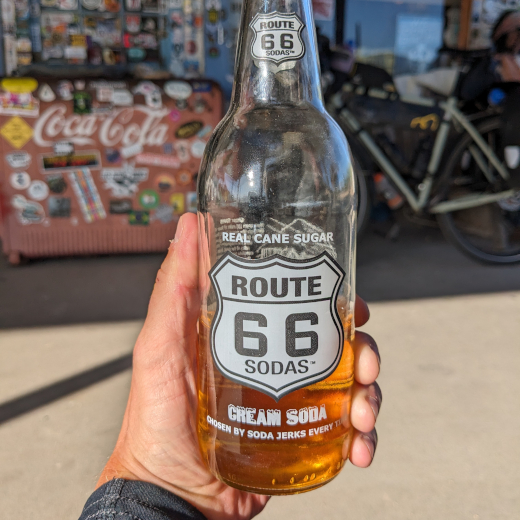 |
Leaving the nostalgia behind, I climbed towards Flagstaff, a mountain town perched at over 2,100 meters (7,000 feet) above sea level—something that caught me off guard after the flat and arid landscapes I had crossed. Known for its dark sky preservation, Flagstaff is a mecca for stargazers, home to the Lowell Observatory, where Pluto was first discovered. The crisp mountain air and the scent of pine trees was a welcomed relief from the desert heat of previous days and weeks.
The road to the Grand Canyon brought more challenges than I expected. As I pushed towards higher elevation, the wind grew fierce, forcing me to take shelter at the base of a mountain for a night of rest. The desolate silence was broken only by eerie howls in the darkness. Wolves? Probably not. More likely coyotes, their calls bouncing off the canyon walls, creating an unsettling but beautiful symphony.
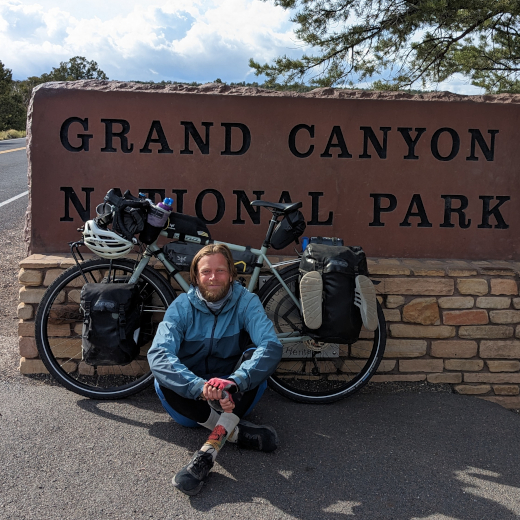 |
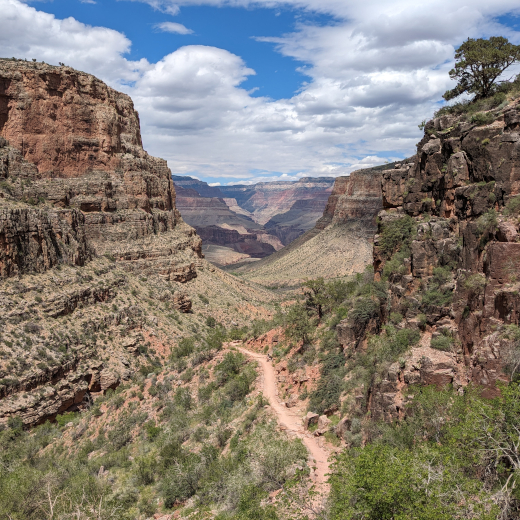 |
Finally, the Grand Canyon. No matter how many photos you’ve seen, nothing prepares you for that first sight of its immense chasm stretching into eternity, layers of red rock revealing millions of years of history. I spent three days here, descending into the depths along winding trails, feeling the change in temperature and terrain as I made my way down to the Colorado River. The return climb was grueling, but the breathtaking views made every step worth it. At night, around a crackling bonfire in the campsite, I swapped stories with fellow travelers—hikers, cyclists, and wanderers from all over the world. As the flames flickered, our conversations drifted between adventure tales and quiet reflections, the vastness of the canyon humbling us all. Each sunset painted the cliffs in surreal hues of orange and purple, a daily masterpiece that left us in awe.
 |
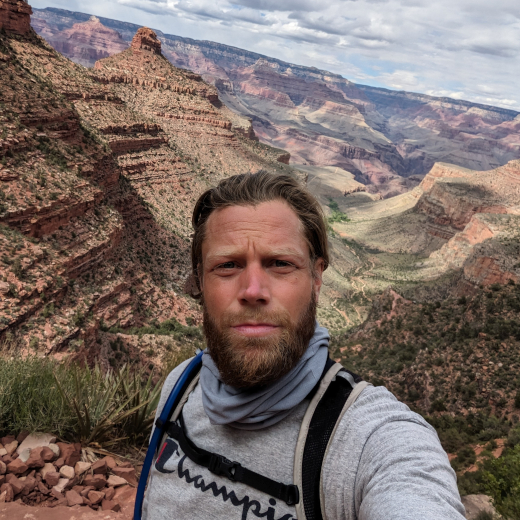 |
Three days here were not enough, but the road called once more, urging me onward.
Through Sacred Lands: Cycling the Navajo Nation and Monument Valley
Ahead of me, the Navajo Nation, the largest Indian Reservation in the United States. The land was sacred, vast, and dotted with rock formations that have been immortalized in countless photographs and films. Here, in Monument Valley, I stood on the iconic stretch of road where Forrest Gump famously ended his cross-country run, uttering the simple words, "I’m pretty tired... I think I’ll go home now." The site had since been named Forrest Gump Hill, a tribute to the scene that captivated millions. But long before Hollywood discovered this land, the area was synonymous with the legendary John Wayne, who filmed several Western classics against this dramatic backdrop. Often referred to as "John Wayne Land," Monument Valley played a crucial role in shaping the imagery of the American West, with its towering sandstone buttes rising from the desert like ancient sentinels.
Though I had hoped to cycle deeper into Monument Valley, restrictions prevented me from riding through its heart. Instead, I opted for an alternate path and found solace in the Valley of the Gods. Its Martian-red landscape stretched endlessly, an unspoiled realm of silence and solitude. I spent an entire day exploring, allowing the sheer magnitude of the surroundings to seep into my bones. Here, time felt irrelevant, the land unchanged by the centuries that had passed.
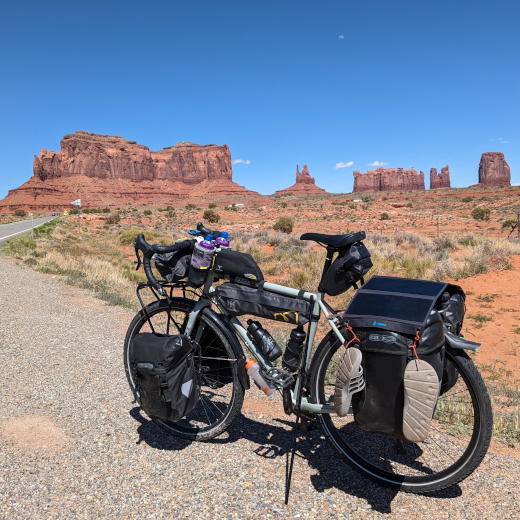 |
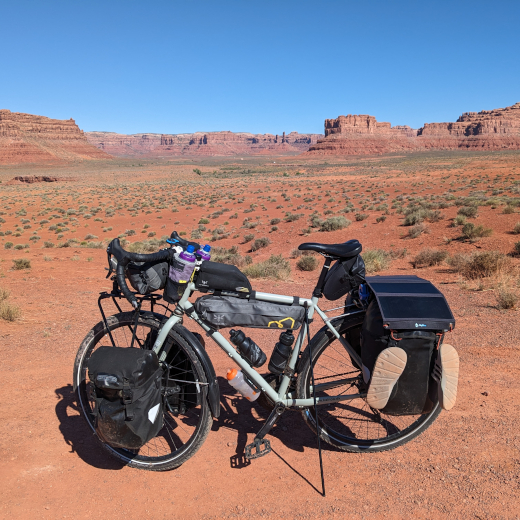 |
From the desert, I began my ascent up a winding switchback road, and with each turn, the landscape transformed before my eyes. The red rock formations gave way to dense clusters of trees, the air growing crisper with every pedal stroke. This was the first true sign that I was leaving the arid lands behind. Over the following days, the change in scenery was rapid and dramatic. The dry heat of the desert was soon replaced by the cool embrace of alpine forests, signaling my arrival in the mountain ranges of Colorado, where an entirely new set of experiences awaited.
Cycling the Rockies: From Steep Climbs to Hot Springs, Sand Dunes, and a Quirky UFO Museum
Colorado brought new challenges—steep climbs, unpredictable weather, and the realization that my old tent wasn’t cutting it anymore. I upgraded to a sturdier one, a necessity in an area where sudden storms and foul weather could roll in from nowhere.
Durango, a lively town tucked into the foothills of the Rockies, had an unexpected cycling legacy—this was the hometown of Sepp Kuss, the American climbing specialist who helped win the Tour de France for my national hero, Jonas Vingegaard. As I pedaled through its historic streets, I imagined the mountain passes that must have shaped his endurance. Beyond cycling, Durango is famous for its hot springs, a welcome indulgence after weeks of riding. I soaked in the steaming mineral pools, my muscles melting into relaxation as the San Juan Mountains loomed in the distance.
The journey eastward took me through some of Colorado’s most surreal landscapes. At first, it was the rugged beauty of the high-altitude forests and mountain passes, but then came a sudden change—a vast, flat plateau that looked nothing like the snow-capped peaks I had grown accustomed to. Here, in the middle of nowhere, stood a bizarre roadside attraction: the UFO Watchtower and Museum. A woman claiming to have seen alien visitors ran the place, and the site itself was a mix of serious extraterrestrial enthusiasm and lighthearted kitsch. Travelers had left offerings—trinkets, notes, and even tinfoil hats—believing the area held some cosmic significance. The whole place felt like something out of an X-Files episode.
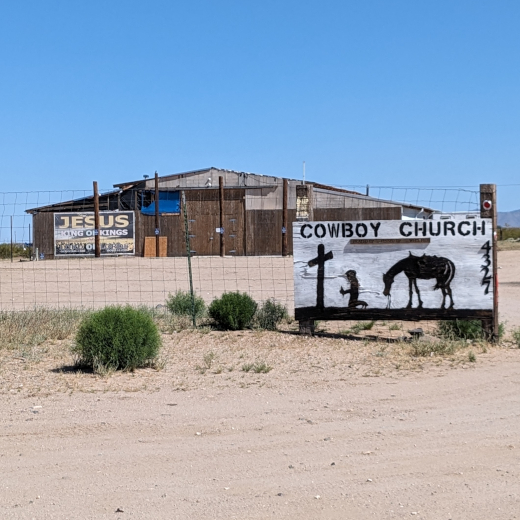 |
 |
As if a UFO hotspot weren’t surreal enough, this same plateau also held the Great Sand Dunes National Park, an otherworldly sea of golden dunes rising against a backdrop of jagged peaks. It was a landscape straight out of the Sahara, yet here it was, inexplicably nestled within the Rocky Mountains. The contrast between alpine forests and this miniature desert was mind-bending.
Moving further east, I had to stay alert for a different kind of danger—wildlife. Colorado is home to both black bears and mountain lions, and food storage became a nightly ritual. I learned the proper "bear hang" technique, carefully suspending my provisions far from my tent, high up in a tree, hoping it would be enough to deter any curious visitors. On one especially quiet night, the distant snap of branches had me gripping my head lamp, scanning the darkness for glowing eyes - but I was of course all safe.
Eventually, I reached Pueblo, the largest city I had seen in weeks. It marked the transition point—behind me, the towering Rockies; ahead, the vast, flat plains of Kansas. Pueblo itself had a rich history as a major steel-producing hub, earning it the nickname "Steel City." It had a rugged, working-class charm, and I took a few days here to rest, refuel, and prepare for the monotonous roads that lay ahead. Gone were the winding switchbacks and dramatic climbs; in their place, endless horizons and relentless winds. The adventure would take on a different character now, but Colorado had left an imprint—both in my legs and in my memories. With my wheels still turning and countless adventures ahead, this journey was far from over. I would soon reach the halfway point of my coast-to-coast biketour. "Well begun is half done" as they say. Read about how I managed to reach New York City in the second part of my journal “Across America on Two Wheels”.
